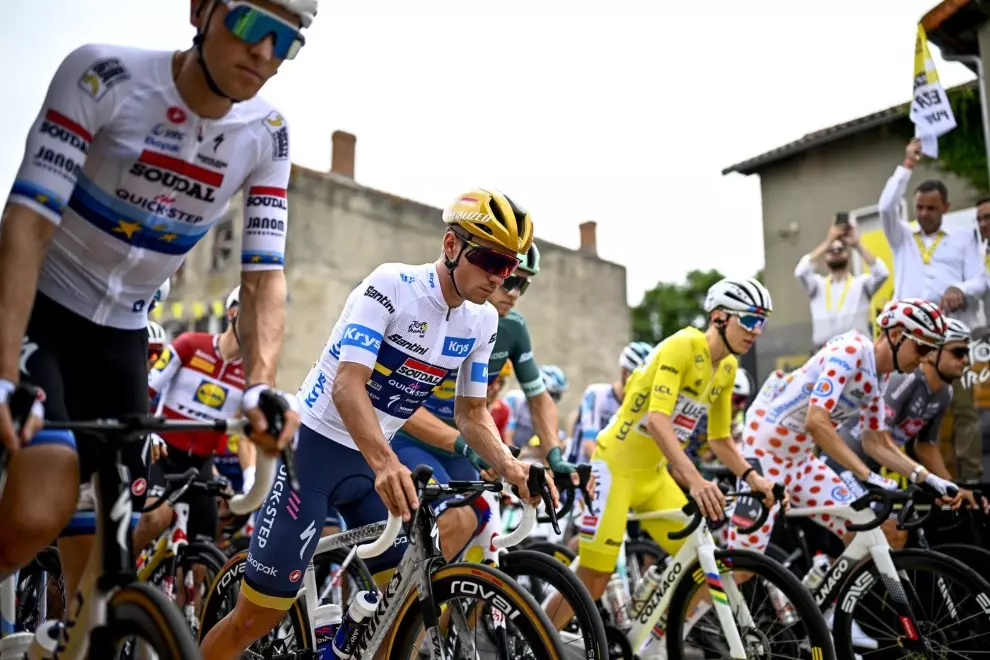If you’ve been watching the Tour de France this year, you’ve probably noticed a suspicious black stick protruding from the end of the saddle of each rider and speculated what were they good for. You may also wonder where all the constant stream of data on your TV screen comes from. Both are connected as they are parts of the Dimension Data system providing TV viewers with astonishing details about all riders of the tour.
The banana peel-sized black sticks are tiny transmitters, collecting and sending off real-time data from riders during the race. Introduced at the Critérium du Dauphiné in 2015, the device has been refined and upgraded and can now offer a wide spectrum of data about riders including speed, position, and much more. In the past, there were tiny mobile phones hidden in the seat posts, used for similar purpose, yet with far less efficiency and accuracy. The system is not the official time tracker which is a small blue pod placed at the rear end of each frame.
The original idea was and still is to provide TV audience with the most relevant details and enhance their experience, as well as recording speed, gradient, surrounding temperature and, primarily, the accurate position of each rider for calculating time gaps between them or realising composition of the groups. The teams are responsible for recharging the small batteries that last for about three days of racing. Obviously, most teams keep recharging them before every upcoming stage to ensure everything goes well.
And how is the data delivered? The devices attached to the seats of the bikes will automatically connect with the nearby helicopters or aircrafts used for broadcasting TV images. From here the data is send to Dimension Data’s trucks and the raw material is transformed into relevant facts that can be presented in easy, comprehensible tabs and graphs.
Once the data is gained, artificial intelligence will analyse the profile of each competitor to the utmost detail. What is just an exciting experience for the TV viewers, can actually help to improve both the riders’ behaviour and the teams’ tactics. According to the collected facts, processed through advanced digital analytics platform, teams get the whole picture of their riders, including their performance during the sprint, climbs or time trials. The results are also being used for calculating finishing time of the stage winner, which is important for setting the time limit in which all riders must reach the finishing line without being disqualified. After each race, there are also many graphs published where you can find interesting fact concerning the timing of small groups’ breakaways or cooperation within the teams.




